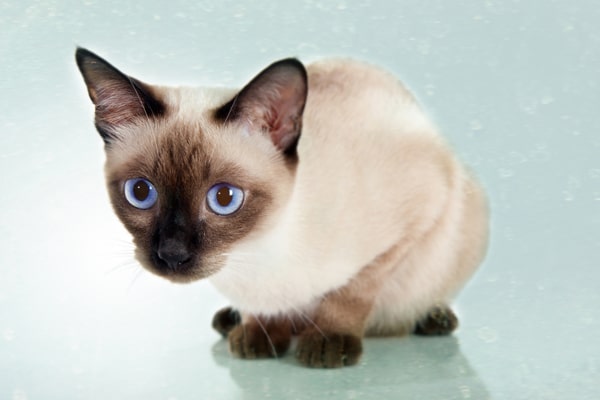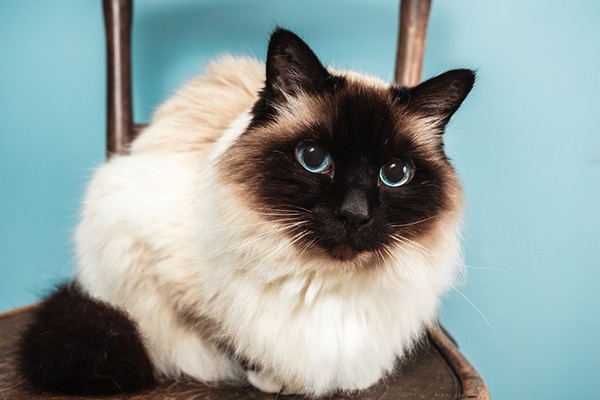5 Intriguing Facts About Seal Point Cats
The post 5 Intriguing Facts About Seal Point Cats by Denise LeBeau appeared first on Catster. Copying over entire articles infringes on copyright laws. You may not be aware of it, but all of these articles were assigned, contracted and paid for, so they aren't considered public domain. However, we appreciate that you like the article and would love it if you continued sharing just the first paragraph of an article, then linking out to the rest of the piece on Catster.com.
One of the most distinctive feline coats is the hallmark of one of the oldest-known cat breeds. Merely mentioning seal-point cats conjures up images of Siamese cats. While it is true that Siamese cats and their mixes seem to have cornered the market on a coat with seal-point markings, the stunning coloration is found on quite a few cat breeds. The various cat breeds with points may differ in conformation, but they have one thing in common: They’re all striking! Let’s find out what’s so interesting about seal-point cats!

Seal point cats have white- to fawn-colored bodies with darker points on their extremities. Photography by Masha Gold / Shutterstock.
1. Seal-point cats have albino origins
Seal-point cats usually have white- to fawn-colored bodies with darker points on their furthest extremities. This interesting coat pattern is tied to genes that both the male and female must possess for the kittens to have points. The alleles (variant forms of a single gene) are actually a form of temperature-sensitive genes associated with albinism. The darker points are found on the face, ears, paws and tail because that’s where the cat’s body is cooler in temperature. The less body heat there is, the darker the fur is on these mousers.
2. Yes, seal-point cats have something to do with seals
There are few cats as gorgeous as seal-point cats. Born snow-white and blind, kittens possessing the seal-point markings don’t reveal their true array of full colors until they’re approximately a year old. The name seal point comes from the color of a seal. According to the National Siamese Cat Club, the range of colors under the seal umbrella go from a dark brown to a brownish black. While chocolate points are recognized as an acceptable variant for purebreds, the difference between seal and chocolate is that seal is darker and chocolate points are lighter and warmer.

Birman cats can have seal-point coloring, too. Photography by Lolostock / Shutterstock
3. What breeds might sport those seal-point markings?
It’s not just the Siamese breed that sports those celebrated seal points. The following breeds may exhibit seal-point coloration:
- Balinese
- Birman
- British Shorthair
- Colorpoint Shorthair
- Himalayan
- Javanese
- Napoleon
- Ragdoll
- Snowshoe
- Thai
- Tonkinese
That’s right, all their ancestry includes a Siamese somewhere in their creation.
According to composer and Siamese cat expert, Jeanne Singer, the Siamese cat has spawned 14 new breeds of cat! Richard Gebhardt, former president of the Cat Fanciers Association, also documents in the same New York Times article that the breed struggled through the 1960s and 1970s due in part to inbreeding while trying to maintain a near-impossible aesthetic. Thankfully, the restrictive standards were widened by many registries, resulting in a larger and healthier population.
4. The history of the seal-point cat
The burgeoning popularity of Siamese cats outside of Thailand began with a single imported pair. Pho and Mia arrived in England in the late 1880s, and their presence ushered in a love of seal-point cats; seal point being the original founding color point. The timing of their arrival couldn’t have been better. It was Great Britain’s dawning era of dog shows, cat shows and fancy registries; creating the perfect storm to catapult the Siamese breed to instant celebrity status. Siamese cats are still considered one of the most recognizable cat breeds in the world.
About 100 years after Pho and Mia arrived in England, the originator of the sublime cat, the Kingdom of Siam, was reportedly importing Siamese cats into the country because it was running out of them! The original seal-point cat was kept by higher class people, like royalty and monks, and their digs were usually palaces and temples. But as time marched on, palaces, along with the ruling class, crumbled — taking most of the cats with them.
5. Myths and magic associated with seal point cats
Tamra Maeo (Treatises on Cats), also called The Cat-Book Poems, dates back to the 1500s and features a dark-pointed cat. An unknown author created the book in Siam, and it’s considered one of the first cat breed registries.
While the Siamese cat was involved in royal court rituals throughout the ages, their allure was steeped in superstition and because they were considered auspicious.
Author Martin Clutterbuck states that while the British Siamese Cat Club dubbed their favorite breed, “The Royal Cat of Siam,” in 1901, the King of Siam shot that down; expressing, “The King of Siam does not keep any special breed, nor are there any specially preserved in his palace.”
There are plenty of Siameezer myths! Legend has it that Siamese cats were the vessels for souls of recently deceased royal family members. It is also believed that their crossed eyes were a result of guarding over a sacred golden goblet that a monk was too drunk to handle. Their eyes are blue because they served heaven, and a princess caused a tail kink.
Truths, half-truths and total fiction aside, seal-point cats have captured our attention for centuries, and will continue to do so for many more years to come!
Tell us: Do you have a seal-point cat? What breed or mix of breeds is she?
Read Next: The Orange Tabby Cat — 8 Fun Facts
The post 5 Intriguing Facts About Seal Point Cats by Denise LeBeau appeared first on Catster. Copying over entire articles infringes on copyright laws. You may not be aware of it, but all of these articles were assigned, contracted and paid for, so they aren't considered public domain. However, we appreciate that you like the article and would love it if you continued sharing just the first paragraph of an article, then linking out to the rest of the piece on Catster.com.




Post a Comment